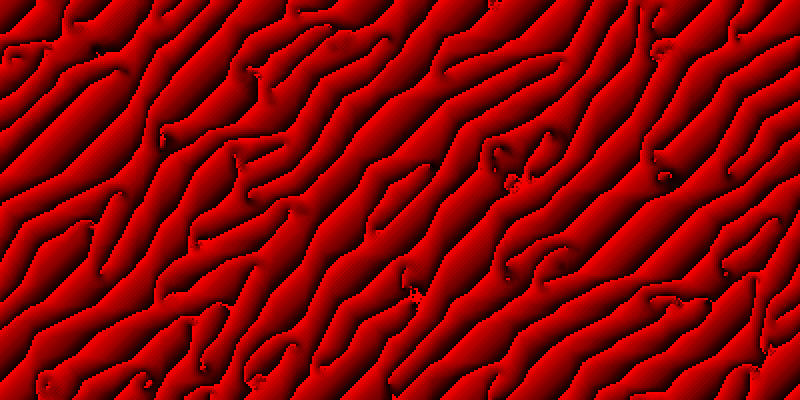“Dunes”, a cellular automaton
A few weeks ago, I considered the following N-state cellular automaton rule: if the top-left neighbour of a cell has a value greater than N/2, then the value of the cell is increased by one (mod N); otherwise, the value is set to the successor of the average of the values of the von Neumann neighbours (mod N). The result looks like this (for N = 24):

Superficially, the image looks like dunes, but if you look more carefully, it might actually bear a stronger resemblance to a network of anastomosing capillaries. Experiments performed on small(er) grids (strongly) suggest that, in most cases, the grid eventually becomes filled with non-anastomosing, parallel vessels with periodically animated colours, the period being at least as big as the smallest dimension of the grid (often with equality, but sometimes equal to the other dimension, or much, much larger than any of those).
